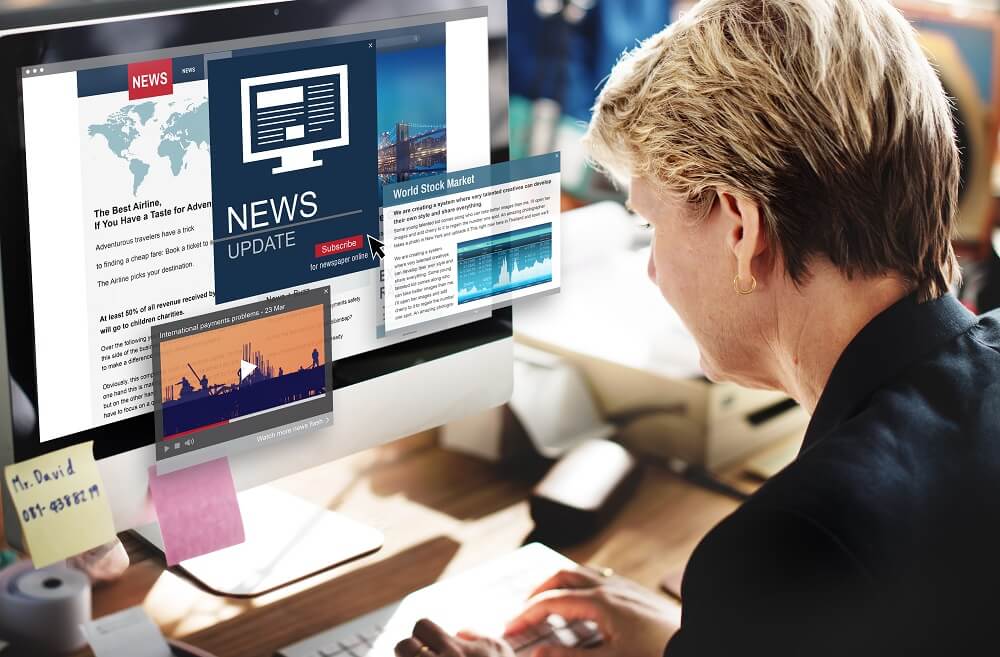A Biased View of Popular News
A Biased View of Popular News
Blog Article
All About Popular News
Table of ContentsHow Popular News can Save You Time, Stress, and Money.Indicators on Popular News You Need To KnowThe 4-Minute Rule for Popular NewsAn Unbiased View of Popular News
Age is additionally an aspect in the method people view the duty of social media sites. Younger social media information customers are more probable to claim it has actually impacted their understanding right. About half of social media sites news consumers ages 18 to 29 (48%) claim information on social networks makes them much better notified, compared to 37% of those 30 to 49, 28% of those 50 to 64, and 27% of those 65 and older.
Closeness is very important. Reporters are interested in points that affect their communities. For example, research study on a state's new tax code likely won't produce the very same rate of interest across state boundaries. Occasionally experts can help center a bigger national story that affects even more than just a city or state. In these cases, it is necessary to be on the hunt for possibilities where subject matter professionals can give insight or where comparable jobs might be taking place in your area.
If you are publishing relevant research, loop in MarComm before the short article being released to make sure that the pitch can highlight the newest component of the tale: the publication of the research study - Popular News. Occasions and statements that entail top-level numbers are more probable to create media coverage. Gos to from national numbers frequently need months of preparation as a result of anticipated area interest
The Only Guide for Popular News
We can help alleviate potential reputational threat with these tales while additionally boosting the chances of generating protection. While many of the above news worths are interwoven, human rate of interest stories commonly stand apart.
Human passion elements can add news worth to various other tales that may seem lacking in the various other worths. The novelty or peculiarity of a situation can help affect whether a news outlet is likely to cover a story. While this is not an exhaustive list, inspecting to see if your story or event has these high qualities before calling us will certainly assist you determine which aspects hold one of the most news worth.

There is likewise considerable evidence that even more customers might start to spend sites for information in the futureif authors can understand them and serve them well. Half of those who do not spend for news actively look for information and resemble clients in various ways. And nearly 2 in 10 of those who don't register for information now suggest they are inclined to start to pay in the future.
What Does Popular News Mean?
We after that ask a set of inquiries to figure out whether people pay for certain sorts of news sources. We asked people to call the sources they utilize most oftenwhether they pay for them or nothow they utilize them, the details points they think about essential about them, and some relevant inquiries about the expense and value of that resource.

More than 4 in 10 likewise mention the reality that loved ones register for the very same product. Greater than a third of individuals claim they initially subscribed in reaction to a discount or promotion. In print, individuals likewise are relocated greatly to register for obtain promo codes that save them money, something that has untapped implications in electronic.
The Basic Principles Of Popular News
Regarding fifty percent are "information applicants," suggesting they actively look for news rather than mostly bumping right into it in an extra passive way, though the news that nonpayers are seeking (for currently, at the very her comment is here least) is often about national politics. Like clients, a lot of these people also obtain news multiple times a day, utilize the information in ways comparable to subscribers, and want similar subjects, including international or global news.
We asked everybody that told us they have a regular totally free resource of information just Find Out More how likely they would certainly be to spend for it. Greater than a quarter (26 percent) claim they would certainly go to the very least rather likely to start paying for itand 10 percent are very or incredibly most likely. These likely payers tend to be news seekers, and they likewise often tend to be people that currently spend for an information registration in enhancement to the source they follow totally free.
Of those who do pay, 54 percent subscribe to papers in print or digitally, which stands for 29 percent of Americans generally. Most of them acquire a print magazine together with their newspaper and pay for two to four information sources in overall, some much more. And while 53 percent are long-time clients (5+ years), more than a quarter (27 percent) have actually purchased their newspaper registration within the previous year.
Few print subscribers assume it most likely they will switch to a digital-only registration in the future, and more than fifty percent of those who like electronic have never ever paid for a print version of the very same resource (Popular News). Totally 75 percent of newspaper payers say they mainly checked out the paper in print, while 21 percent are mainly digital individuals, and 4 percent define themselves as evenly divided
Report this page